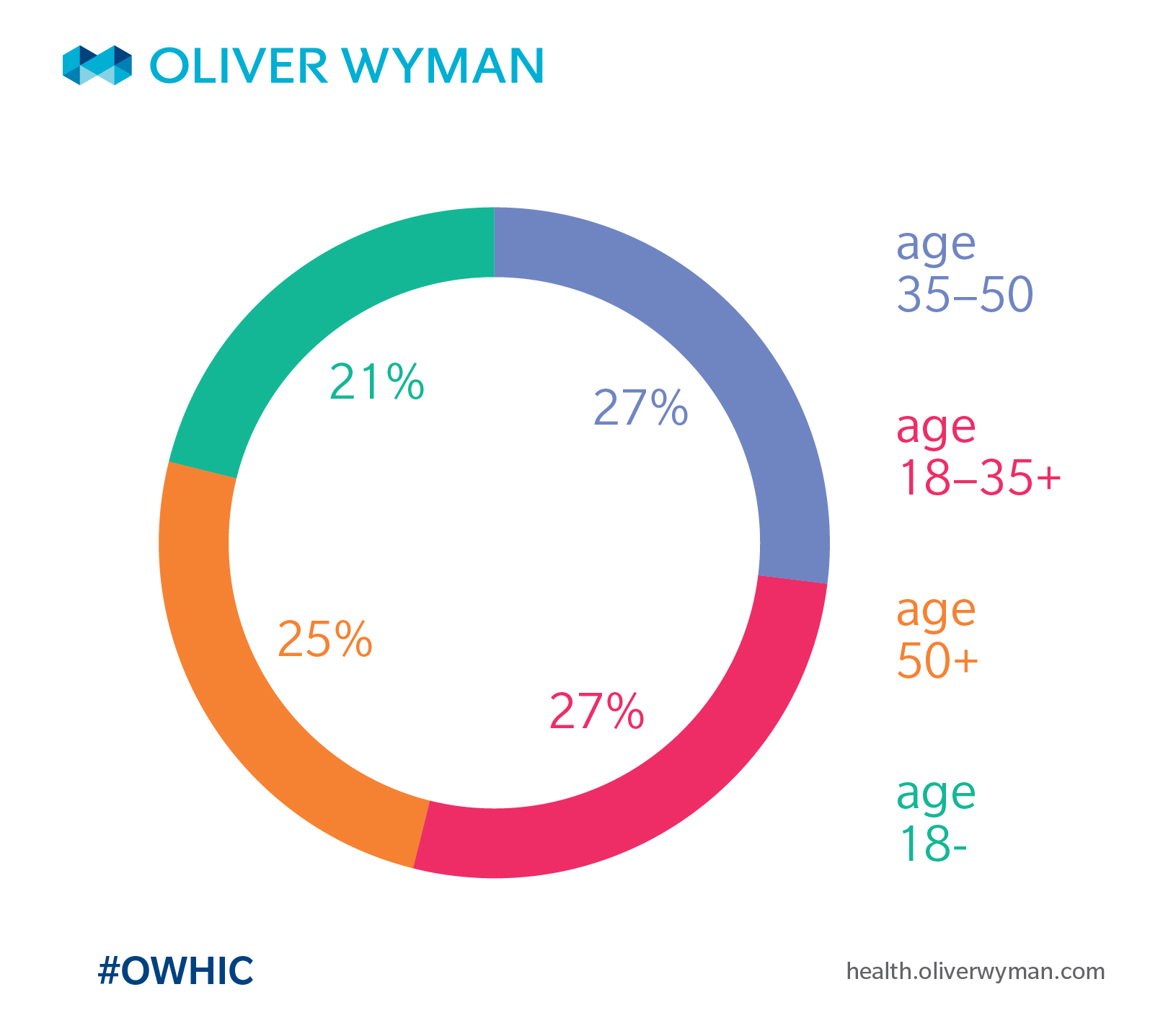Incumbents and new entrants are still investing in alternative care settings, fueling a rapid disruption of traditional and entrenched care delivery models along the way. Traditional players now need to pull consumers into their ecosystems using innovative, non-traditional means.
One overlooked option? The neighborhood gym or fitness center. Investments in gyms and fitness centers may extend healthcare stakeholders’ reach beyond the pharmacy, clinic, or doctor’s office, into a setting where consumers are far more likely to independently manage and improve their physical fitness and well-being.
Technology: the Great Fitness Equalizer
Providers who leverage this consumer access point are at an advantage. The reason why comes down to age. Gym use is roughly evenly split across adult age groups. Therefore, when providers build rapport with a younger, healthier population segment historically difficult to engage, they can simultaneously connect to older consumers.
For a consumer subset that invests time and money as gym members or fitness class aficionados, traditional lines between fitness activities and “healthcare” are becoming increasingly blurred. Consumers’ technology access provides them with information and tools to holistically manage their health and well-being.
Market Segment of Gym Users
When Retail and Healthcare Collide
Imagine a scenario where gym membership is affiliated with a healthcare provider (like a retail clinic or primary care group) that offers gym members incentives. Consumers are then rewarded for annual wellness visits with, say, a gym membership rebate. That affiliation becomes the first step towards a more fully-integrated ecosystem of health and wellness services where a single entity coordinates an individual’s pharmacy usage, primary and preventive care, and exercise all in one.
But would consumers think of their gyms as access points for broader healthcare needs? Survey results imply yes. According to the Oliver Wyman / Welltok 2018 Consumer Survey of US healthcare, 20 percent of consumers express a willingness to pay for access to a wellness center that offers exercise, fitness, and rehabilitation services overseen by medical professionals.
The Future Comes Down to Data
Wearables and at home monitoring devices (such as smartwatches that monitor heartrate, Wi-Fi-enabled scales that monitor weight, blood-pressure cuffs to monitor, well, blood pressure) enable the eco-system and provides value for all stakeholders. This includes members (like the many tools and access points to manage their health and well-being), and providers (like capturing a greater wallet share and higher customer/patient retention, and gaining access to a patient’s health data captured by wearables and remote monitors).
This type of new technology, as Oliver Wyman recently detailed in "Putting the Health Data Graph to Use", is powerful; it allows consumers to shape the future of data ownership, and securely share this data to whomever they choose. For example, according to our "2018 Consumer Survey of US Healthcare: Waiting for Consumers":
- almost 90 percent of consumers are willing to share personal health data (when there was some kind of return), and
- nearly 85 percent are willing to share shopping behaviors (also when there was some kind of return).
Data Must Be Leveraged to Maximize Consumer Relationships
The opportunity for frequent data capture provides longitudinal understanding of patient behavior and health status, which in theory can help payers and providers in risk-based contracts understand the health needs of individuals better and design targeted interventions accordingly. An open data system has tremendous potential.
“The vast majority of hospitals — upwards of 80 percent — will see convergence to be able to communicate with Apple Health by this time next year. That's a phenomenal rate of adoption, not specific to Apple, but the capacity to communicate with Apple, or that proverbial second or third app that may come behind it," said Aneesh Chopra, President of CareJourney and former Chief Technology Officer under former US President, Barack Obama, on the Oliver Wyman Health Podcast.
Whatever dimensions a provider or innovator chooses to compete in, they will need more avenues to building stronger consumer relationships. Gyms and fitness centers offer an innovative option and can play a central role in enabling these relationships.


